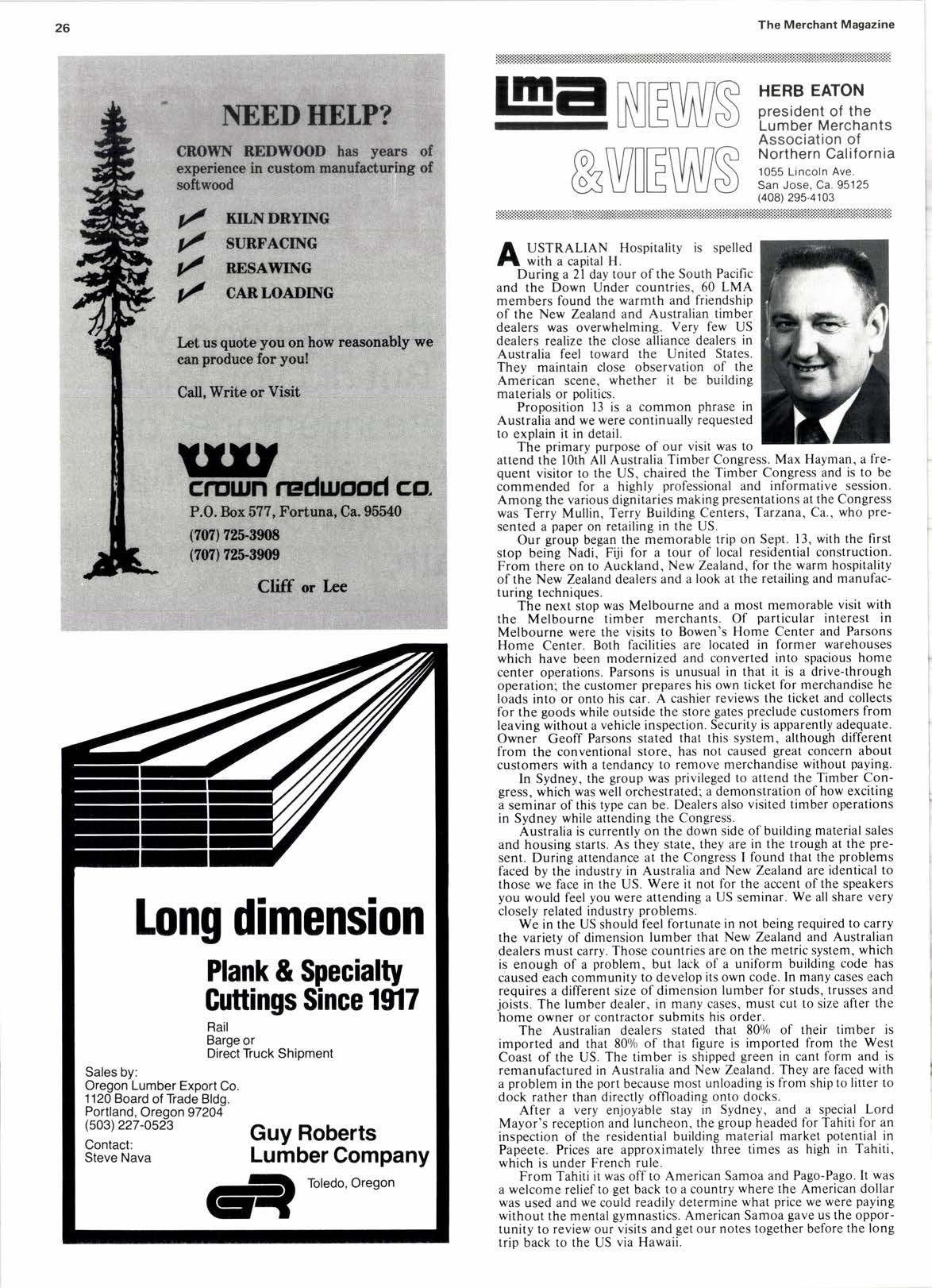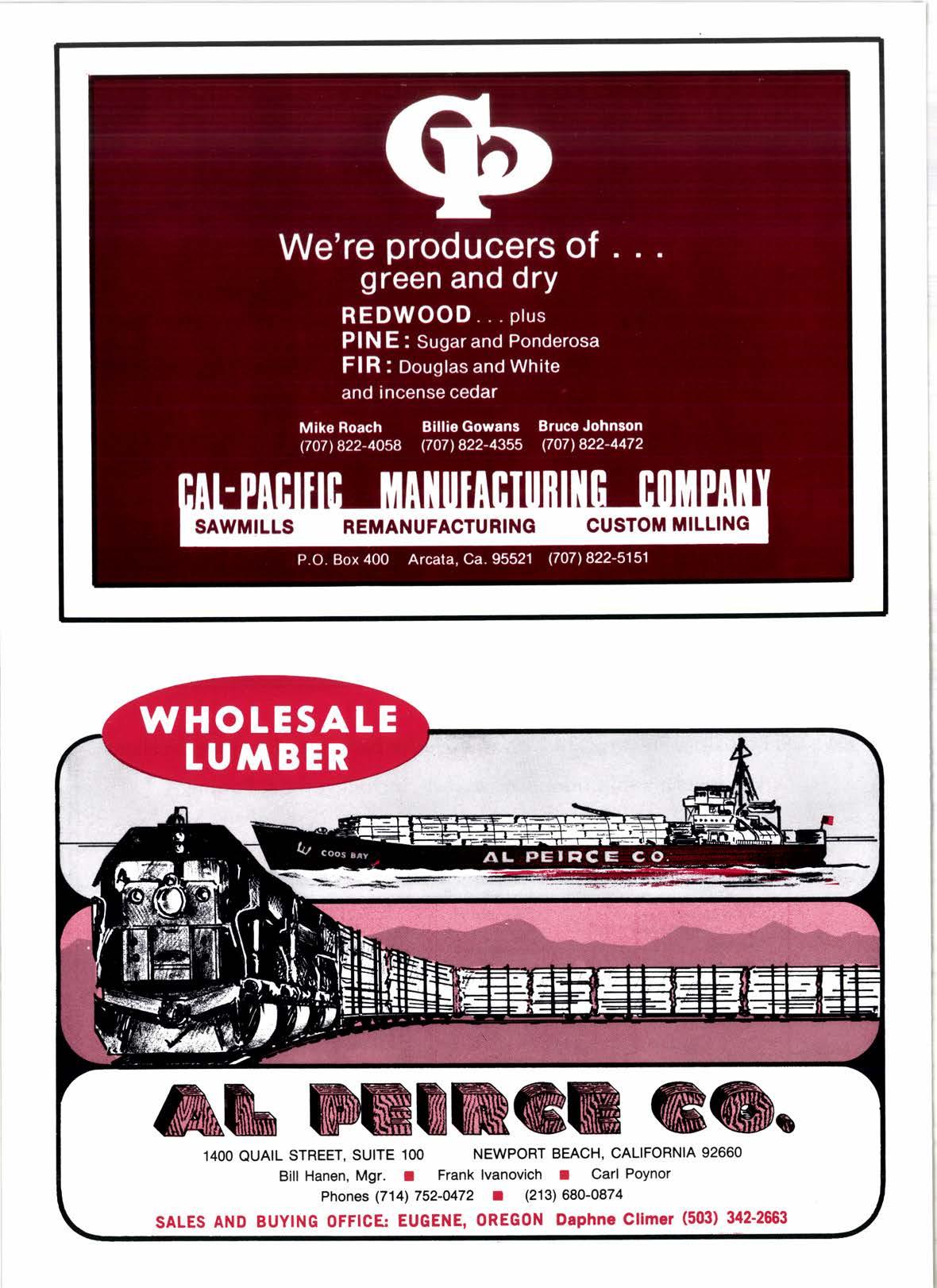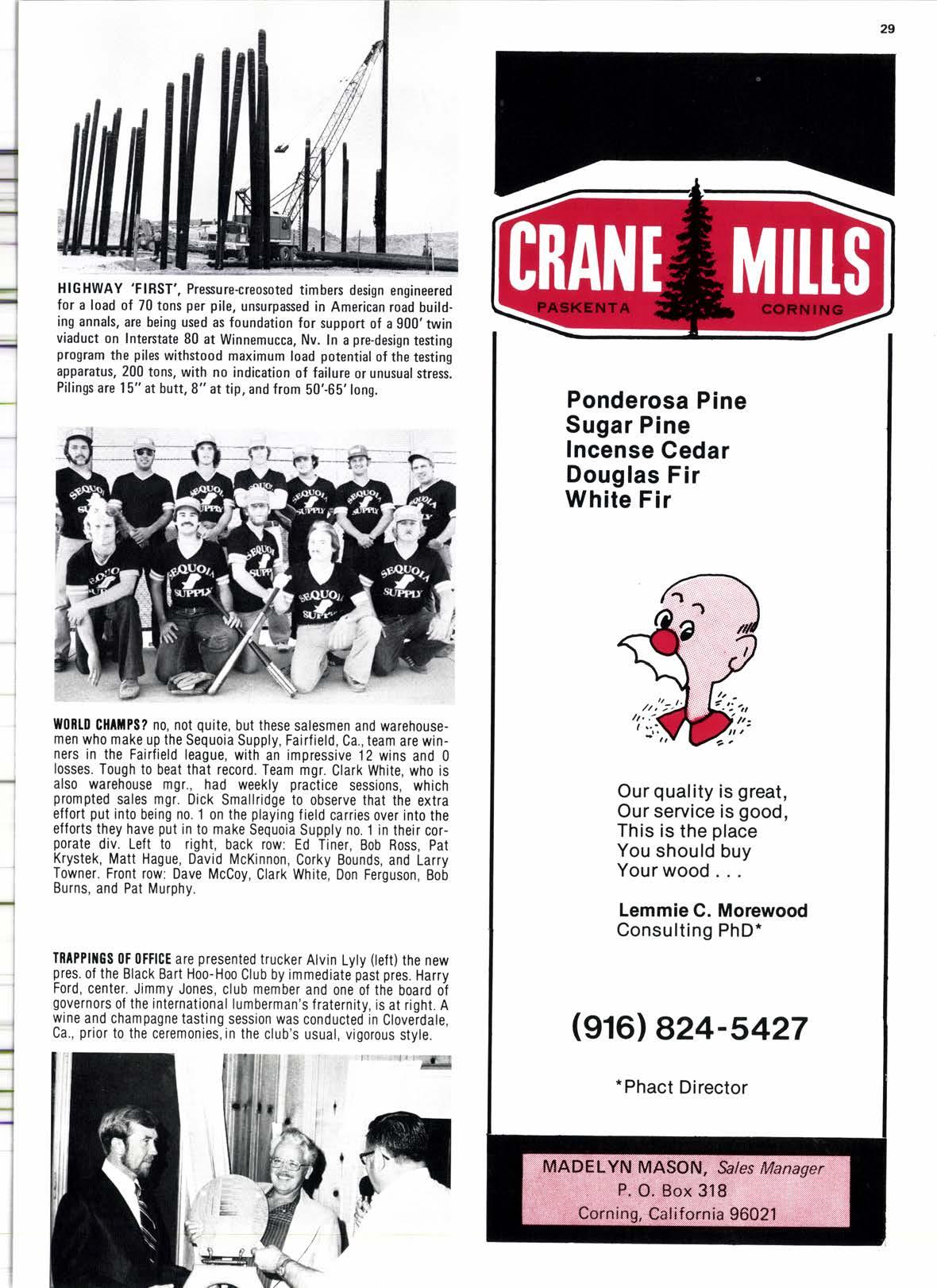
5 minute read
Notlust plywood tlmbers too
You know you can get the plywood you want at Crown Plywood. But did you know that we also carry complete inventories on rolled roofing, redwood and cedarfencing, Doug Fir timbers, pine commons, redwood bender and lath, and plywood sidings?
You can get it all with one call from Crown Plywood. The lumber you need, ?nd the service you expect.
So give us a call at 714-530-39^ l.
To our L.A. area customers, you asked f or it, you got it21 3-598-9675
Crown Plywood
7705 Garden Grove Blvd. Garden Grove, CA. 92641
USTRALIAN Hospitality is spelled lA
with a capital H.
During a 2l day tour of the South Pacific and the Down Under countries, 60 LMA members found the warmth and friendship of the New Zealand and Australian timber dealers was overwhelming. Very few US dealers realize the close alliance dealers in Australia feel toward the United States. They maintain close observation of the American scene, whether it be building materials or politics.
Proposition 13 is a common phrase in Australia and we were continually requested to explain it in detail.
The primary purpose of our visit was to attend the lOth All Australia Timber Congre Congress. Max Hayman, a frequent visitor to the US, chaired the Timber Congress and is to be commended for a highly professional and informative session. Among the various dignitaries making presentations at the Congress was Terry Mullin, Terry Building Centers, Tarzana, Ca., who presented a paper on retailing in the US.
Our group began the memorable trip on Sept. 13, with the first stop being Nadi, Fiji for a tour of local residential construction. From there on to Auckland. New Zealand, for the warm hospitality of the New Zealand dealers and a look at the retailing and manufacturing techniques.
The next stop was Melbourne and a most memorable visit with the Melbourne timber merchants. Of particular interest in Melbourne were the visits to Bowen's Home Center and Parsons Home Center. Both facilities are located in former warehouses which have been modernized and converted into spacious home center operations. Parsons is unusual in that it is a drive-through operation; the customer prepares his own ticket for merchandise he loads into or onto his car. A cashier reviews the ticket and collects for the goods while outside the store gates preclude customers from leaving without a vehicle inspection. Security is apparently adequate. Owner Geoff Parsons stated that this system, although different from the conventional store, has not caused great concern about customers with a tendancy to remove merchandise without paying.
In Sydney, the group was privileged to attend the Timber Congress, which was well orchestrated; a demonstration ofhow exciting a seminar of this type can be. Dealers also visited timber operations in Sydney while attending the Congress.
Australia is currently on the down side of building material sales and housing starts. As they state, they are in the trough at the present. During attendance at the Congress I found that the problems faced by the industry in Australia and New Zealand are identical to those we face in the US. Were it not for the accent of the speakers you would feel you were attending a US seminar. We all share very closely related industry problems.
We in the US should feel fortunate in not being required to carry the variety of dimension lumber that New Zealand and Australian dealers must carry. Those countries are on the metric system, which is enough of a problem, but lack of a uniform building code has caused each community to develop its own code. In many cases each requires a different size of dimension lumber for studs, trusses and joists. The lumber dealer, in many cases, must cut to size after the home owner or contractor submits his order.

The Australian dealers stated that 800/o of their timber is imported and that 800/o of that figure is imported from the West Coast of the US. The timber is shipped green in cant form and is remanufactured in Australia and New Zealand. They are faced with a problem in the port because most unloading is from ship to litter to dock rather than directly olTloading onto docks.
After a very enjoyable stay in Sydney, and a special Lord Mayor's reception and luncheon, the group headed for Tahiti for an inspection of the residential building material market potential in Papeete. Prices are approximately three times as high in Tahiti, which is under French rule.
From Tahiti it was off to American Samoa and Pago-Pago. It was a welcome relief to get back to a country where the American dollar was used and we could readily determine what price we were paying without the mental gymnastics. American Samoa gave us the opportunity to review our visits and get our notes together before the long trip back to the US via Hawaii.
FRANK DAVIS executive vice president
TH.E YEAR 1979 wiltbe a busy one I with several education programs scheduled. Included are ses'siois on fork lift training, financial management and sales.
Since OSHA requires all fork lift driye-rs_lq complete a course in training, ALBSA is conducting a series of foi( lift training classes throughout the state.
They were conducted in the Phoenix area on October 18. 19. and 3lst. Later dates included November 2. 14, and 16 with both mornins and afternoon sessions, starting at- 8:00 a.m. and l:30 p.m.

Other areas of the state will be covered in late November and earlv December.
Thayer Corp., Phoenix, an associate member, is handling the training for the program which till be held ai their Phoenix-based location.
Drivers will receive an ID card and completion certifi cate.
The Building Materials Merchandising class at Phoenix College this current fall semester has 20 students.
The fall Board of Directors meetine was held on Oct. 3, in Scottsdale, ar th6 Raddison Hotel with 25 ollicers and directors in attendance.

HIGHWAY'FIBST', Presure*reosoted timbers design engineered for a load of 70 tons per pile, unsurpased in Americin road building annals, are being used as foundation for support of a 900'twin viaduct on Interstate 80 at Winnemucca, Nv. In a pre-design testing program the piles withstood maximum load potential of the testing apparatus, 200 tons, with no indication of failure or unusual stress. Pilings are I 5" at butt, 8" at tip, and from 50'-65' long.

W0[LD GlltilPS? no, not quite, but these salesmen and warehousemen who make up the Sequoia Supply, Fairfield, Ca., team are winners in the Fairlield league, with an impressive 12 wins and 0 losses. Tough to beat that record. Team mgr. Clark White, who is also warehouse mgr., had weekly practice sessions, which prompted sales mgr. Dick Smallridge to observe that the extra elfort put into being no. 1 on the playing field carries over into the efforts they have put in to make Sequoia Supply no. l in their corporate div. Left to right, back row: Ed Tiner, Bob Ross, Pat Krystek, Ivlatt Hague, David McKinnon, Corky Bounds, and Larry Towner. Front row: Dave McCoy, Clark White, Don Ferguson, Bob Burns, and Pat Murphy.
TRIPPIilGS 0t 0FFICE are presented trucker Atvin Lyty (teft) the new pres. of the Black Bart Hoo-Hoo Club by immediate past pres. Harry Ford, center. Jimmy Jones, club member and one of the board oi governors of the international lumberman's f raternity, is at right. A wine and champagne tasting session was conducted in Cloverdale, Ca., prior to the ceremonies, in the club's usual, vigorous style.










